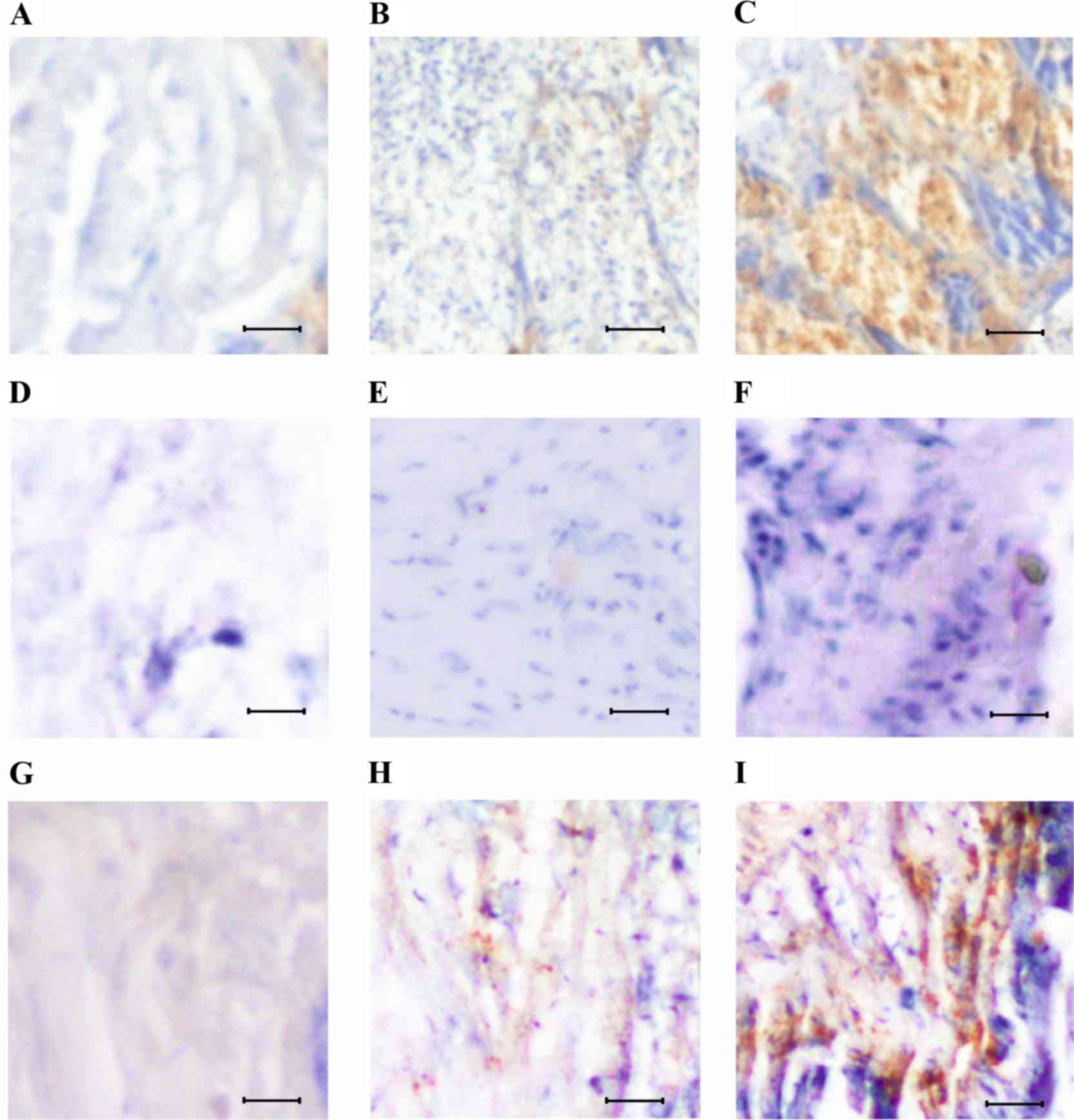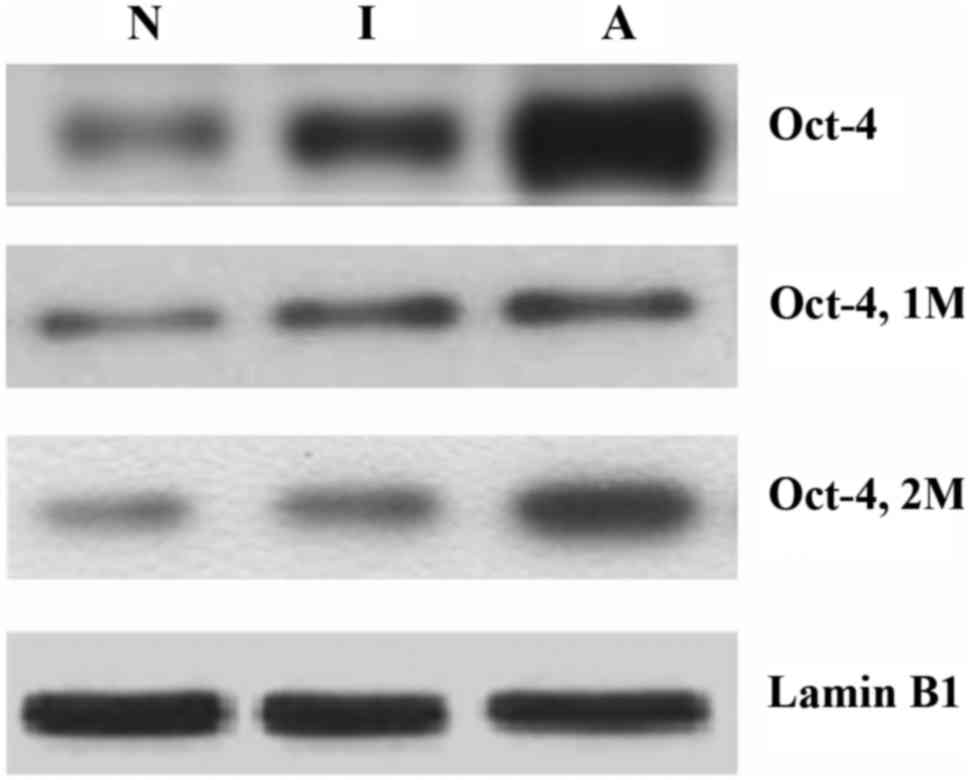Expression profile of Oct‑4 lung cancer‑specific marker prior and subsequent to a salirasib treatment regime
- Authors:
- Published online on: September 1, 2017 https://doi.org/10.3892/ol.2017.6868
- Pages: 5145-5148
-
Copyright: © Ao et al. This is an open access article distributed under the terms of Creative Commons Attribution License.
Metrics: Total
Views: 0 (Spandidos Publications: | PMC Statistics: )
Total PDF Downloads: 0 (Spandidos Publications: | PMC Statistics: )
Abstract
Lung cancer is one of the leading types of cancer that lead to mortalities in the male and female populations. The existing lung cancer‑specific markers are not able to accurately predict the condition of the disease, and the response of these markers can vary under various pathological conditions. The ability for tumors to regenerate following treatment can be more aggressive, and this may be due to the remaining lung cancer‑specific stem cells, which are resistant to chemotherapeutic drugs. Evaluating cancer stem cells under various pathological conditions, as well as prior and subsequent to treatment, can help to increase the understanding of the underlying mechanisms. In the present study, a mouse model with initial and advanced forms of lung cancer was developed using tobacco smoke carcinogen. It was observed from tissue sections that there were many actively dividing cells spread throughout the mouse lung tissue with the initial stages of lung cancer, and these cells aggregated in advanced stages of lung cancer. Furthermore, immunohistochemical staining indicated that there was an increased number of octamer‑binding protein 4 (Oct‑4)‑positive cells present in mouse tissues with advanced stages of the disease compared with tissues without lung cancer or at the initial stages of disease. The cancer stem cell population following salirasib treatment was also investigated in two groups. The mice in the early treatment group were administered with salirasib following 1 month of tumor growth, and the delayed treatment group was treated following 2 months of tumor growth. The number of cancer stem cells was markedly reduced in the early treatment group. However, salirasib failed to have any observable effect in the delayed treatment group. Cancer stem cells were analyzed using the marker Oct‑4 to improve an understanding of the proliferative ability of cancer stem cells under various pathological conditions, which may lead to the development of novel cancer therapeutics.












